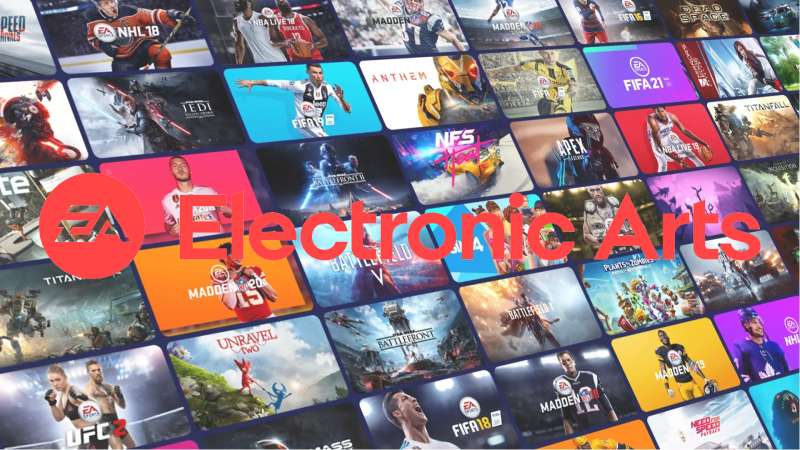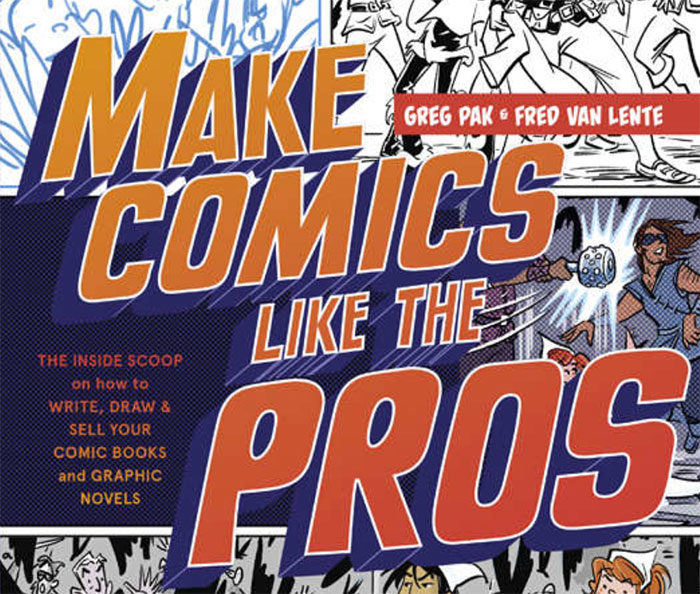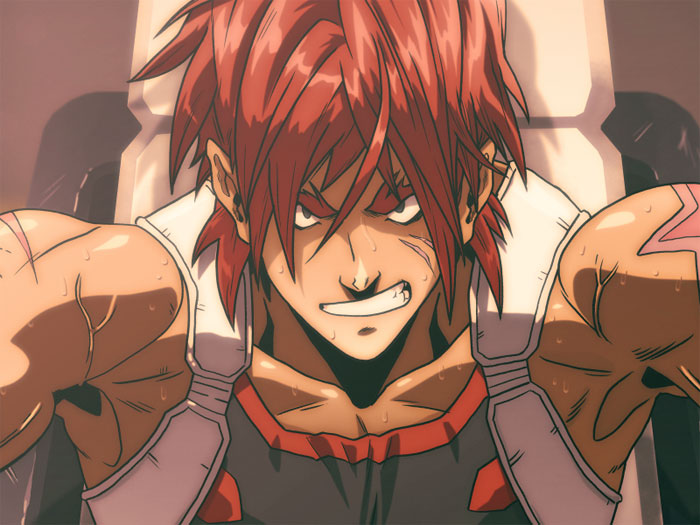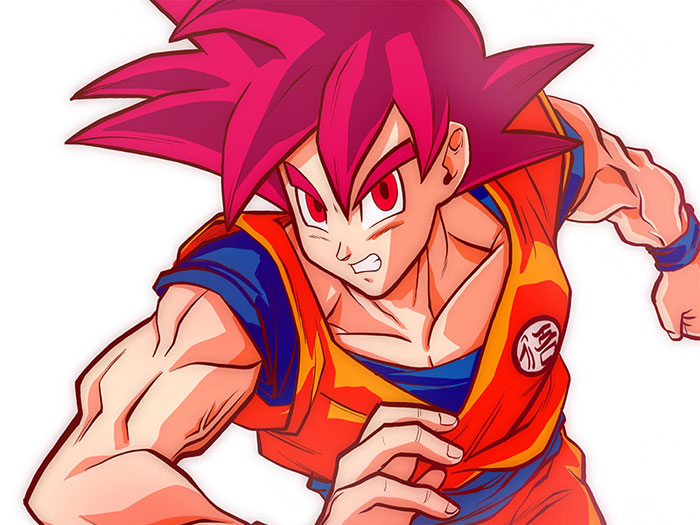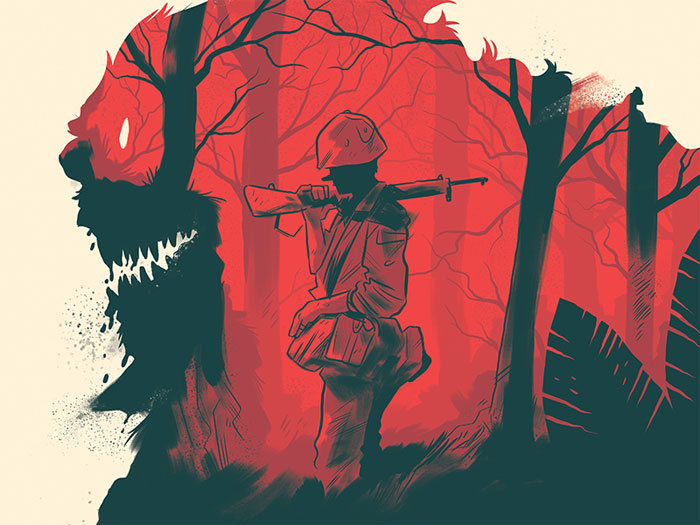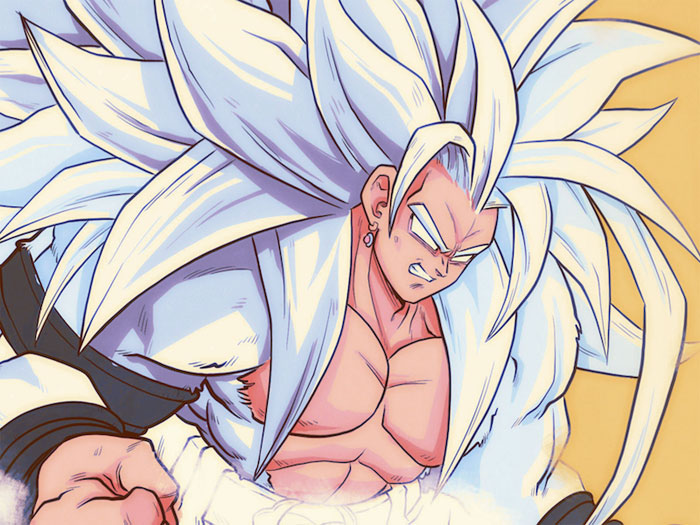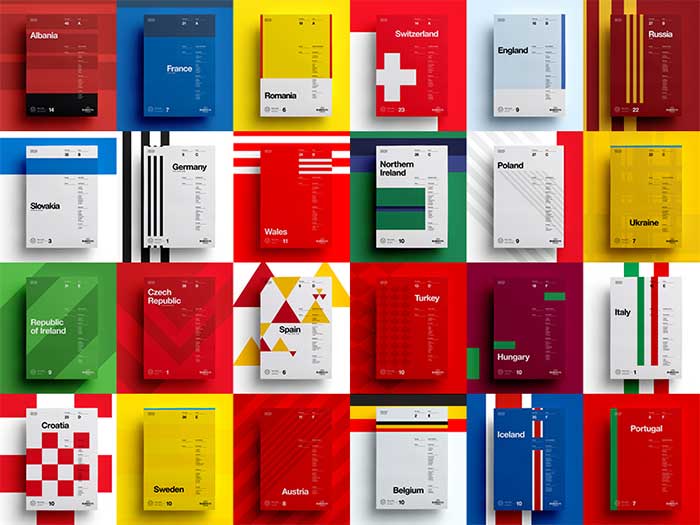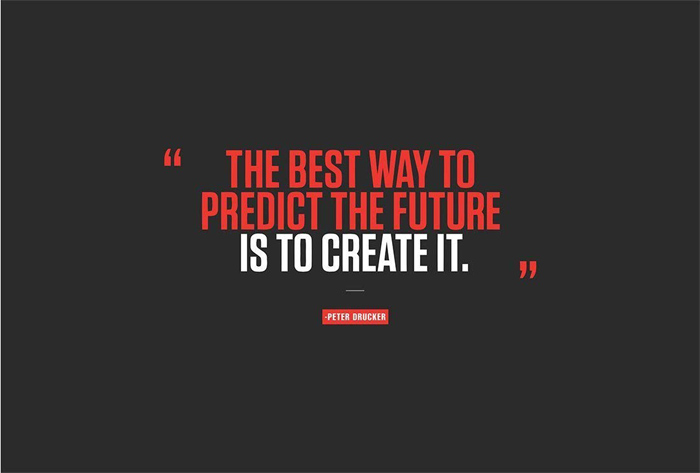How To Make A Comic Book, Design, Characters, And Cover

Ever since you’ve read your first comic books, you were fascinated with them. And if you’ve got an artistic background you might have asked yourself how to make a comic book.
Comic books have captured imaginations for decades.
They are a great way to introduce new characters, thrilling plots, and amazing worlds.
Their format allows artists and writers a great deal of freedom and some really great opportunities for collaboration.
If you’ve decided to make your own comic book, you need to know that it’s a complicated and often difficult process.
Making a comic book is a process composed of many steps. In the mainstream comic book industry, even producing one issue takes an army of specialized workers from its conception to its printing.
This is an intimidating process, especially if you’re new to printing comic books. Switching from short-form media like webcomics to a long-form project is in tall order.
Key takeaways
- Choose a drawing style that is time-efficient, especially for series with multiple issues, and utilize modern technology such as Photoshop to speed up the inking process.
- Draw on your strengths and avoid elements you’re not skilled at drawing. If necessary, take time to learn new skills separately before incorporating them into your comics.
- Understand basic visual rules and study anatomy to avoid falling into the uncanny valley and to create appealing characters and scenes.
- Plan your comic’s layout carefully, using techniques like cliffhangers to keep readers engaged, and use thumbnails to work through compositional issues before finalizing the artwork
How To Make A Comic Book
Here are some tips and trick to help you learn how to make a comic book.
Read Books about Making Comic Books
One of the best ways to learn how to make comics is to read books from experts. Draw on the experiences of those who have studied and succeeded in making a comic book.
This will spare you a lot of pain and also give you some ideas for how to go forward.
Here are a few good books for you to read before you decide on how to start a comic:
- Understanding Comics and Making Comics by Scott McCloud
- How to Make Webcomics by Scott Kurtz, Kris Straub, Dave Kellett, and Brad Guigar
- Unnatural Talent by Jason Brubaker
Be Inspired by Your Idea
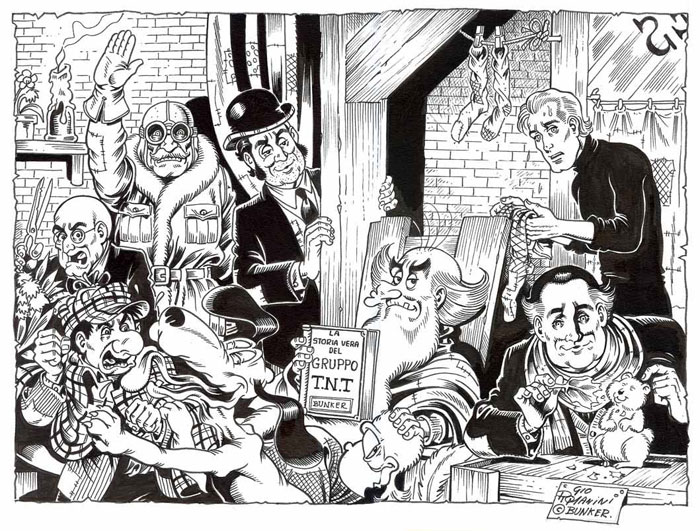
You need to really believe in your comic book concept and want to share it with others. Making a comic book is a long, hard process.
If you really love what you’re doing and care about what you’re trying to say, it’s going to be a lot easier to dedicate the time and effort you’re going to need. This dedication will also show in the final product.
Model Your Characters

Characters and character design is a very important element of your comic. Take the time to really figure out how to make a comic book character. Make a model sheet or turnaround. If you have the resources, time, and skill, try sculpting your character in clay or 3D.
You’re going to be redrawing these characters over and over again in different poses and environments.
You want to have a solid grasp on their design. Redrawing a character halfway through your comic is not something you want to end up doing.
Develop a Good Style
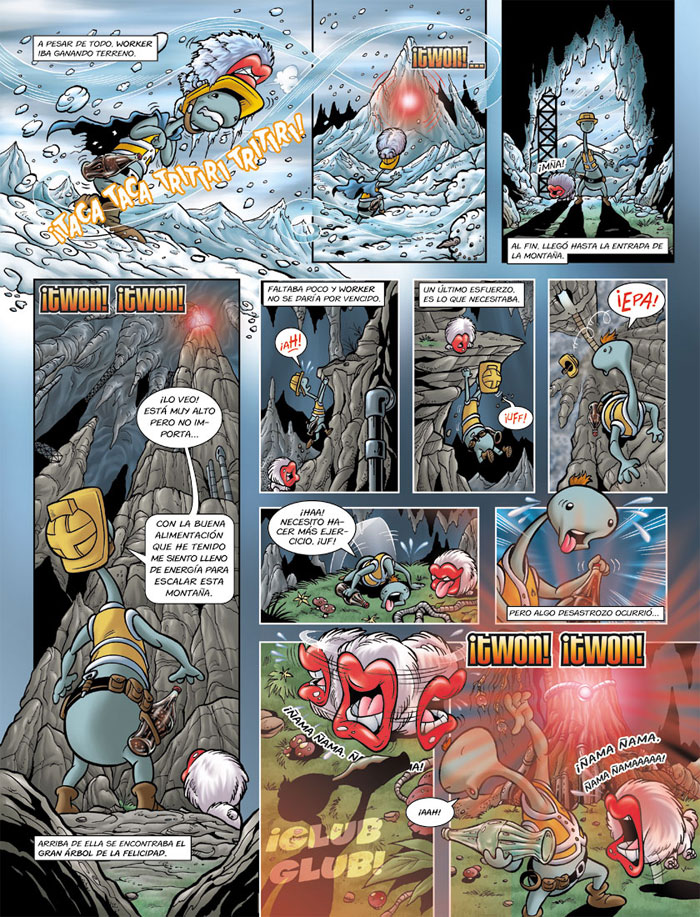
You need to draw in a style that won’t take too long to draw. While detailed panels may be fun, they take time to create and color. This is going to make it take a long time to make your own comic book. If it’s going to have more than one issue, it’s going to make producing them take a long time.
Modern technology has made drawing a lot faster. You don’t have to ink all your pages since you can just boost the contrast of pencil lines in Photoshop or similar software. This will save you hours of work. Having a good grasp of the various effects of your graphics software’s tools is a smart idea.
Focus on Your Strengths
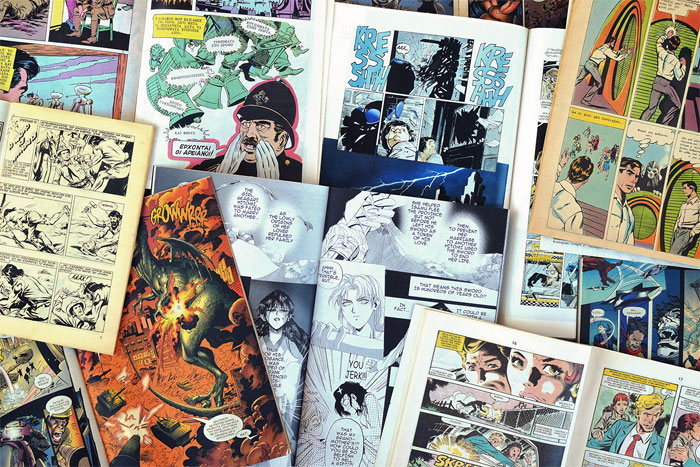
Draw what you like drawing. If you are terrible at drawing giant robots or animals, they shouldn’t be what your story is about. The time to learn how to draw something is not when you are learning how to draw comics. It’s not a great medium for it.
Fixing issues that you notice will make your production rate a lot slower and more painful. If you have a great idea, but don’t have the skills for it, write it down somewhere and start figuring out what you need to learn to be able to make it a good comic book.
Study the Basics
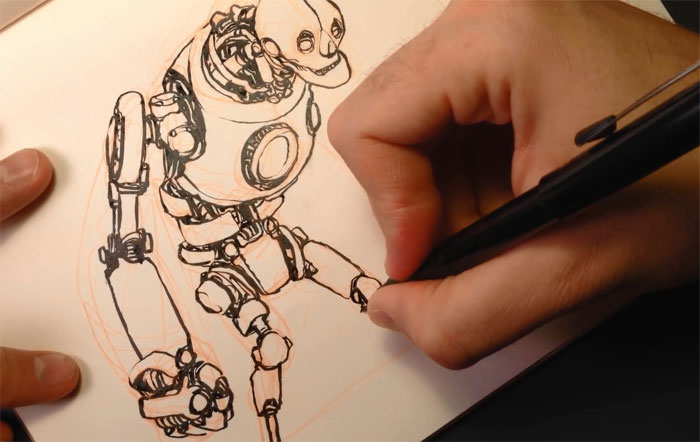
It’s important to know how real things move, especially if you’re drawing human characters. Even highly stylized comic book artists need to know how the body actually works so they don’t dip into the uncanny valley or draw disturbingly ugly characters all the time. Study anatomy before you start on your comic book. Buy books. Take classes. Use references.
It’s also important to understand other basic visual rules like perspective if you’ll be using it. Knowing these rules will result in a better looking comic book. Understand the basic artistic rules in order to learn how to create a comic book.
Even the most wildly stylistic comic book shows a good grasp of these rules. Their artists knew when and how to break them for the best effect. They understand why a particular scene or character makes a reader feel uneasy or charmed.
Create Stylistic Rules
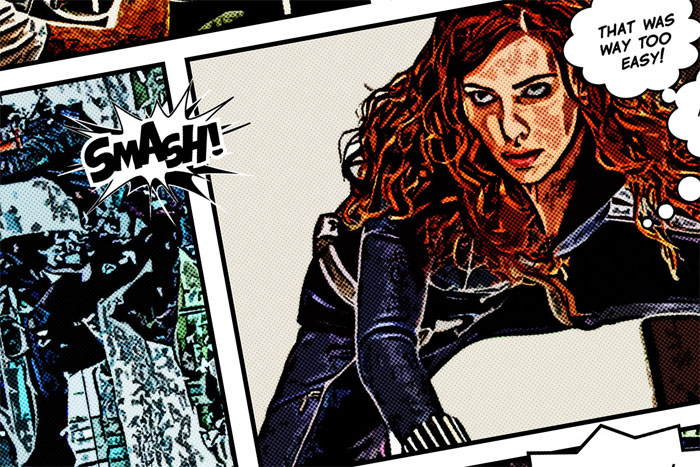
As you’re deciding how to start a comic, decide on the rules you’re going to keep for its style. This will ensure that it has a single coherent look from start to finish, instead of switching randomly.
Sometimes, you’ll find yourself suddenly inspired by some new technique or the works of some other artist that you’ve just found. These rules are up to you. They should fit your artistic process and the subject. They should also be appealing.
Every comic you make should have a different style. This allows for people to differentiate them and it also allows you to experiment with new ideas. This applies to comic series as well. They should maintain a consistent style so they don’t confuse readers.
Tips for Working

Here are some basic tips to help you know how to how to draw a comic book effectively:
- Work in RGB and print in CMYK. All you have to do to pull this off is flatten your page and convert it when you’re done. Make sure you save your RGB file with all layers in case you need to change it or use it as a reference. All printers use CMYK to print everything. There are a lot of opinions about this and you may want to take a look to see what people think. The RGB to CMYK conversion for printing does result in very great, crisp colors, but it may not be what you’re looking for.
- Create your comic book in at least 300 dpi. Almost all printers print at 300 dpi. The big boys at DC and Marvel work at 450 dpi to 600 dpi. However, it still gets reduced when it goes to print. If you want to know how to make a comic book cover that you can easily be printed as a poster, make the file at 600 dpi. Again, this choice may or may not work for you. It is something you should decide before you start making a comic.
How to Make a Comic Book Step by Step
Create Your Script
The key to knowing how to make comic books lies in the idea behind it. Often, this core concept begins as a very simple idea, like “what would happen if aliens crash landed in 1860s England?” It could also be centered on a character, whether that’s a superhero, a werewolf, or an everyman who finds himself in an extraordinary situation.
It’s a good idea to keep a notebook or word processing document just for these ideas. That way, you always have somewhere to look for inspiration. Sometimes you’ll get a new idea when you’re in the middle of a project or otherwise occupied.
It’s all too easy to lose these ideas if you just keep them in your head. Write them down for you to look back at. Feel free to include images that also seem like good inspiration for new stories to tell.
Writers are highly important for making comic books. Your writer can be one person, or you can have several writers for a comic book. The writer can be the person who originated the core idea of the comic, or it can be someone else. Artists can be their own writers if they’re skilled at both drawing and writing, but not everyone is and some choose not to.
What do the writers for comic books do? Aren’t they primarily stories told with pictures?
Yes, but they are pictures with a plot and usually dialogue as well. Even if you are doing a ‘”silent” comic, where there is no text and the story is entirely told in pictures, you still want to plot it out.
Good comics use all the plot rules of any other kind of storytelling. Learning how to write a graphic novel is much like learning how to write many other kinds of media, especially movie and television scripts.

A comic book writer gives the comic its structure, setting, rhythm, and characters. How much detail the writer gives to the artist (if they’re different people) varies. Some writers give specific instructions of characters and panels. Other time, a writer may only give a vague plot. He or she will come back to add in the right dialogue after the art hits a certain point of development.
Most comic books are created by a team that works closely together. Writers and artists need to communicate their plans to each other. For the best results, frequent updates to each side of the comic book creation process work well. Writers are often the more visionary of the two, creating the ideas behind the plot, world, and characters. Their scripts provide the basis for the art. If you’re an artist (but you’re not a master wordsmith) then working with a freelance writer is a good option, just make sure that you’re both on the same page
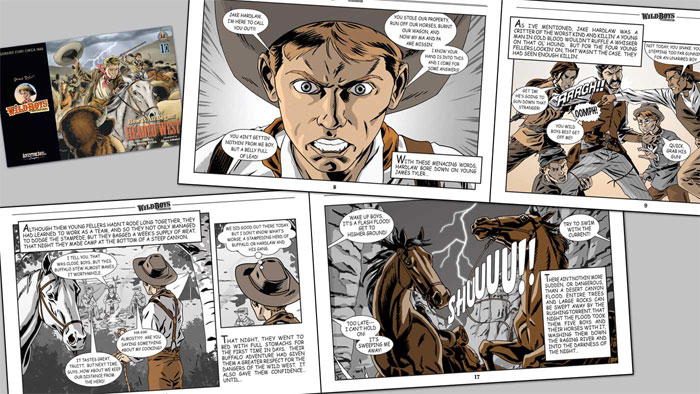
Here’s a list of comic book writer skills that you should develop if you’re looking into trying it out:
- Good communication skills. Making a comic book requires a lot of collaboration between people with different skill sets. A comic book writer should be able to communicate clearly with artists and editors to make sure all the elements of the project come together to create a cohesive whole.
- The comic book writer isn’t the artist, but the writer is the source of the ideas that drive the comic. Text works together with the art to create the story, world, and characters. A strong and lively imagination makes generating these ideas much easier.
- Good grasp of grammar. As with any professional writer, a comic book writer needs to know good grammar and spelling.
- Things will not go the way you plan. Your editor or artist may want or need to do things a different way. Flexibility will reduce stress and allow you to actually finish your comic.
- Deadlines are very important when making a comic book. Others on your team are relying on you to meet your deadlines so that they can meet theirs. Missing any of them is bad for business. If you do it regularly, you will gain a reputation for being flaky.
Here are some more tips for anyone who wants to be a comic book writer:
- You might be wondering if you should write using pen and paper or if you should go the modern route and use a computer. It all depends on you. Pen and paper are easily available, portable, and you don’t have to worry about startup or disastrous glitches. A lot of famous professional writers use pen and paper, like Neil Gaiman. You’ll eventually need to put everything on a computer, however, but use a pen if that is more comfortable for you.
- Keep a dictionary and thesaurus close to hand, especially if you’re writing on pen and paper. You’ll want to know how to spell words correctly. Keep the thesaurus to make sure you have a large bank of words to choose from so you don’t sound stale or repetitive. If you’re using a computer to write, remember dictionary.com and thesaurus.com. Most word processing programs include spell check and a thesaurus as well.
- Keep a lot of books around and read them. Good writers are often good readers. Reading will help you become a better writer, but it can also give you new ideas to play with. Read more than just comic books and graphic novels. Read any good writing you can get ahold of.
- Maintain a personal website. This is really important for your writing career. It gives you a digital “home” where fans can connect with you and you can promote your projects. It can function as a resume, as well.
- The best thing to do to become a writer is write. All the books, notebooks, and positive attitude won’t help you be a writer if you don’t write.
Plan Your Layout
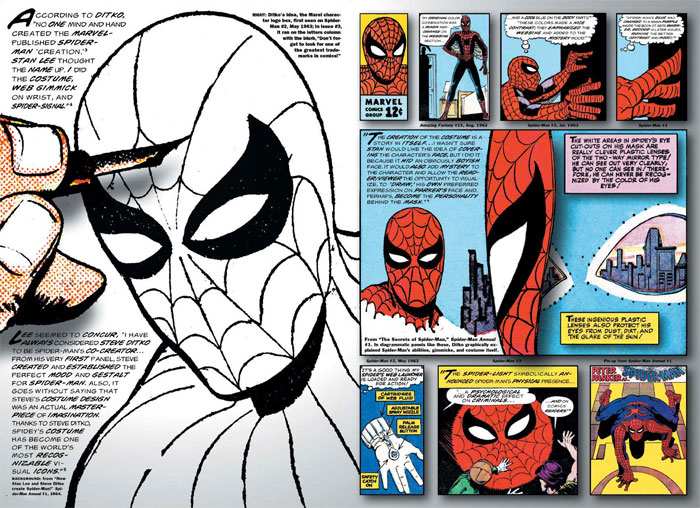
With your script complete the next step you need to take in order to make your own comic book is plan the layout.
A good comic book layout keeps readers interested. A good technique is ending almost every page with a cliffhanger. This will draw readers in and make them wonder what is coming next.
They’ll know it’s going to be something interesting, but they won’t know what it is. This will keep your readers turning the page. If you’re creating a comic book series, do the same for every issue for the same effect.
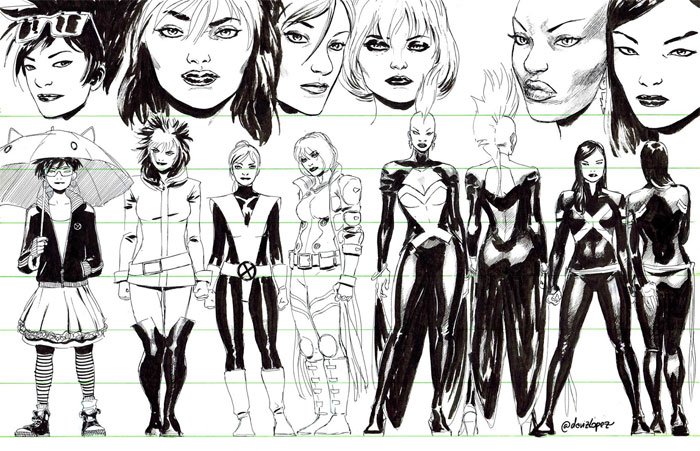
Thumbnails are a useful format to create layouts. Thumbnails are similar to storyboards. They will allow you to work through any compositional issues before you start inking and coloring your drawings.
Treat them as an extremely rough draft of your drawings and overall layout. Keep it on hand as a reference for when you move further down the line. Be prepared to change it since you, your writer, or your editor may make changes that affect the flow of your layout.
Don’t forget to leave room for dialogue. This will be added after the drawings have been completed, usually as their own layer on graphics software like Photoshop.
Penciling
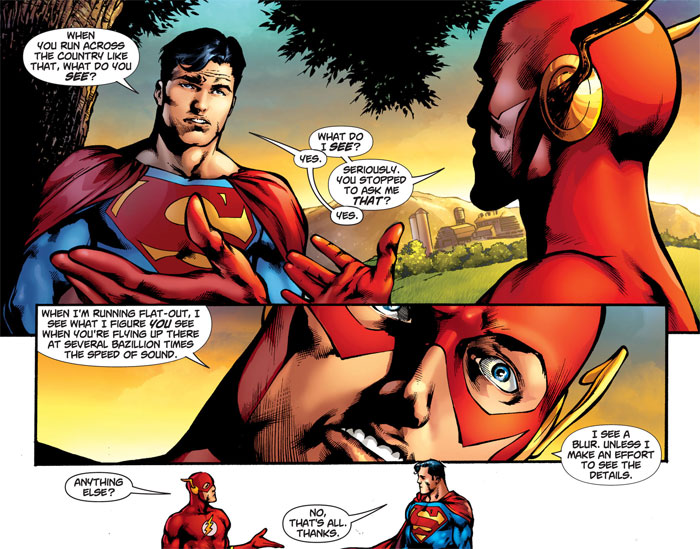
Once the layout and plot are ready, the first step in creating your art is to, well, draw it. At this stage, it goes to the penciler. This is the person who draws out the story using a pencil. Using a pencil makes it easier to fix any mistakes or make changes quickly.
The penciler is only responsible for a small portion of the comic, but that small piece is a vital piece. Many people judge a comic solely on the basis of its artwork. Good writing will not save a comic with bad art.
The penciler is the one who takes the script and really gives it form. Some scripts are highly detailed, describing how everything should look. Others only make basic suggestions about what should be on any given page. The penciler will need to take whatever kind of script there is and bring it to life in a quality way that makes sense.
The skills you need if you want to be a penciler are:
- Artistic skill. If you want to be a comic book artist, you need to know how to draw. Study art and anatomy to develop your skills. Take a look at the work of the some of the comic book greats like Lee, Kirby, and Cassaday. Practice every day. Buy books and take classes.
- Express the images in your mind. You need to be able to envision something than be able to put it on paper. This can be very hard. You may need to make some trial sketches to get an image just right.
- When making a comic book, things change all the time. Editors and writers may require things to change suddenly, or plans may fall through. If you’re working as the sole creator, this is still true, but freelance artists need to be extremely flexible since they’re working with other almost every step of the way towards publication.
- Meeting deadlines is very important. Without art, there is no comic book. Delays in penciling will delay everything else.
- Collaborative attitude. Comic books are the product of a team effort. You’ll be working with writers, editors, other artists, and more. You need to be willing to work with others and make changes based on their suggestions. Learn when you need to stand your ground and when you need to be flexible.
- You need to retain a consistent style throughout the project. Your characters should have the same look throughout the comic book. It’s possible to make intentional changes, but they should be triggered by some event in the story. Consistency will make you a better artist and will also help build your professional reputation.
Here are more tips for anyone aspiring to be a comic book penciler:
- Have good pencils. You may prefer the classic yellow pencil, but some artists like more precise, easy to keep sharp mechanical pencils. A lot of pencilers prefer to use a light blue colored pencil since it will disappear during copying. You can also use brushes or anything that leaves a mark, but they’re called pencilers for a reason. Their most common tool is still the pencil.
- When you start out, any kind of paper will do to help you get the basics. Once you’re more comfortable and ready to start investing more in your skills, most artists use a kind of paper called Bristol Board or Bristol Paper. This is an 11 X 17 size piece of multi-ply paper with a 10 X 15 size working space. This is the industry standard.
- Keep a sketchbook around at all times. This will allow you to sketch ideas down wherever you go. You might just be out walking your dog when things will suddenly click. Get the ideas down on paper quickly so they don’t fade away.
- Have a specialized workspace. A lot of pro artists use some form of art table as their workspace. It can be adjusted to different angles to make drawing more comfortable. Sometimes, these tables have an opaque or glass top with light under it. These are called light boards. This allows artists to make rough sketches on cheaper paper that can be traced on nicer paper for the final product. Whatever kind of workspace you prefer, it should be a dedicated space for drawing, with all the materials you need within easy reach. This consistent, customized space will help produce consistent art.
- Keep reference materials nearby. These can be books, character sheets, or even single reference images. If you need to draw the White House, search for an image and use it as a reference. Keep anatomy books on hand. Some artists use reference models to get lighting, shadows and poses correct as they draw.
- Consider using digital methods to create your drawings. This can be done at the penciling stage or anywhere along the line. It’s usually what is done these days when art moves into the inking, coloring, and lettering stages. Even if you prefer to work by hand, understanding how to use digital methods will help you better understand how other creators think. Wacom tablets are a common choice since they connect directly to a computer and draw in a program. It is often used for a lot of different stages of making a comic book.
- You should get a good scanner since most comics are finished digitally. This will make it easier to send it to the next stage, of course, but it will also make it easier to send to other members of the comic creation team for review and input. You can use it to keep backups of work that’s done on paper, which is fragile and can be easily damaged by almost anything.
- Create a website to showcase your work. This can offer an easily updated and accessed portfolio for future employers to look at. It’s also a great way for fans to connect with you, as well as offering a platform to tell people about new projects and sell any items you’ve made (like prints, for instance).
Inking
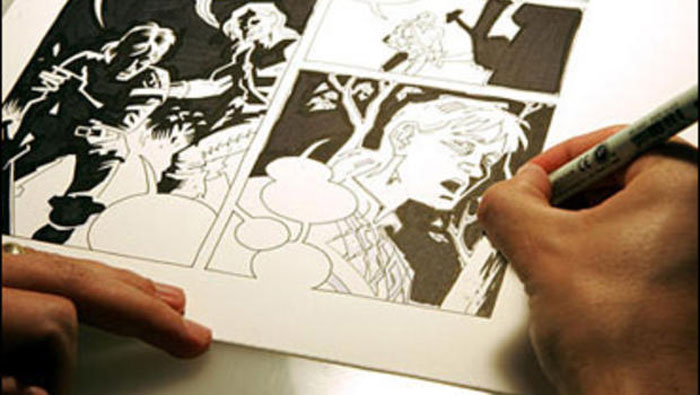
Inking takes the penciled sketch of the artwork and turns it into a final piece of artwork. Inkers go over the pencil lines with black ink and add in depth. It will look much more finished and three-dimensional after this process is completed. The inker also makes the artwork easier to copy and color.
Pencil lines are rougher and fainter, making it much harder to do these things. Sometimes the penciler is also the inker, though it is a different set of skills. Sometimes people refer to inking as glorified tracing, but it is a vital step in comic book creation. A good inker is an artist in their own right.
You cannot move a comic book to the printing stage without them. Some well-known comic book inkers are Klaus Janson, Bob McLeod, Vince Colletta, Jimmy Palmiotti, and Mark Farmer.
Skills an inker needs include:
- Artistic skill. Inking is more than tracking. An inker needs to understand how art works just as much as a penciler. How heavy do liens in the foreground need to be compared to background ones? What’s the emphasis in this scene? A good inker understands these questions and is often a fairly gifted illustrator in his or her own right.
- A good sense of light and dark. Inkers are responsible for adding depth to the art. They work only in black and white. Shadows and light are very important in accomplishing any sense of dimension. Understanding them well will turn even flatter, stylized art into dynamic scenes.
- Inking is a fast process. Inkers need to be quick and accurate with their work.
- Things can change quickly. A completed project may have to go back for extensive reworking, possibly on an even tighter schedule. An inker needs to remain flexible no matter what happens.
More tips for aspiring inkers:
- India ink is the one used by most inkers. It is a black carbon-based ink that retains its color when put on paper.
- Most inkers use crow quill pens and brushes. However, you can use almost anything that can put ink on the paper. You can use sharpies, mechanical pens, sponges, and even q-tips. Sometimes these odd inking tools can create interesting effects.
- Remember that you will make mistakes, so keep white-out on hand. Also, know how to use it well. You can use any kind of white-out. Many pro artists use a gauche water-based paint for white-out.
- Use a ruler to create perfectly straight edges. Very few people can reliably draw straight lines even if you are tracing one. There are a lot of straight lines in comics, like panel borders. You may want to get a triangle and other straight edge tools, as well.
- An inker should have a workspace that helps with concentration. Like pencilers, many inkers use an adjustable drawing table. A nice adjustable lamp is also a good idea since you’ll want to shine plenty of light on areas where you need it.
- More and more comics are being inked digitally. Most often this is done with Photoshop. Make sure you understand how all the tools in the program work.
- Set up your own website. An inker needs a portfolio like any other artist, as well as a place for fan to reach out and a platform for promotion any projects you are working on.
Coloring
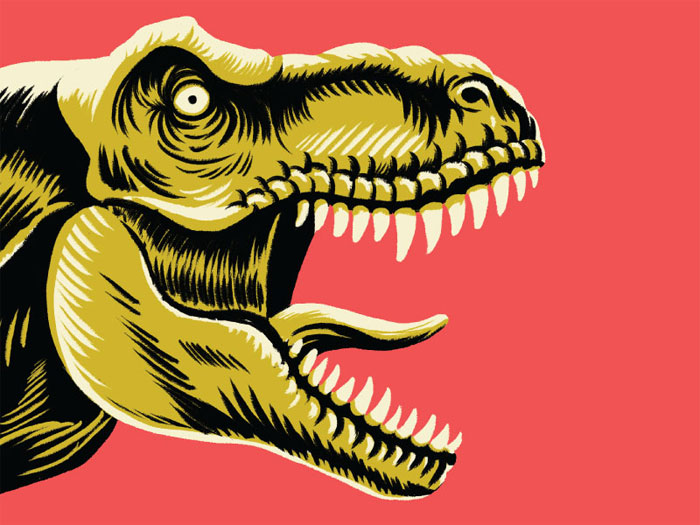
Coloring is addition of color, shading, and lighting to the inked drawings of the comic book. Attention to detail is vital. If a colorist makes a mistake people notice. Randomly switching hair colors and suddenly vanishing details confuse readers. Good colorists bring in the final, vital touch of life to comic book art.
Coloring is often broken up into two sections: flatting and coloring. During flatting, basic color areas are blocked out to guide the colorist through what space needs to be what color. Coloring consists of adding the color, lighting, and shading. This helps complete dimensionality and depth added in by inking.
Some comic books choose not use coloring at all, like “The Walking Dead”. These generally don’t sell as well in most places. Sometimes it is an attempt to save money, while others use it to add a certain style. Most Japanese comics (manga) are not colored.
Skills required of a colorist:
- Understanding of color. Colorists know how to use color well. They understand color theory. They understand how lighting changes colors. While colorists can receive helpful formal training, a lot have learned as they go.
- Artistic professionalism. Colorists aren’t just coloring between the lines; they are artists, too. A colorist needs to be patient and possess some degree of artistic skills. A colorist should be practicing on a regular basis and continuing to improve.
- Coloring is one of the last stages of comic book creation. Earlier delays will result in a colorist having less time to complete his or her work. Multiple delays will all be felt at this point in the process. That means a colorist needs to be able to work quickly and accurately in order to meet deadlines if there are delays earlier on.
- Tech know-how. Almost all coloring is now done digitally. Knowing how to use this technology well is very important. Most colorists will never touch the physical art, but will instead be coloring a scanned piece.
Other tips and trick for a colorist:
- A lot of colorists do their work on a Mac computer. A windows machine can work perfectly well for coloring, of course, but the industry standard is a Mac. A good understanding of how to use a Mac and iOS will go a long way.
- The most common software used for coloring it Adobe Photoshop and Adobe Illustrator. You can do a lot with these programs. There’s all kinds of color and texture options, as well as many tools that make coloring much faster, accurate, and easier. These programs are something you really need to have but keep in mind that they are expensive. There are free programs available like GIMP and Paint.net, but they do not do all the same things.
- Consider getting a Wacom tablet. Many colorists consider it a must-have. However, if you’re just starting out, don’t feel you need to invest in one. It is good to have if you want to feel like you’re actually painting in color.
Lettering
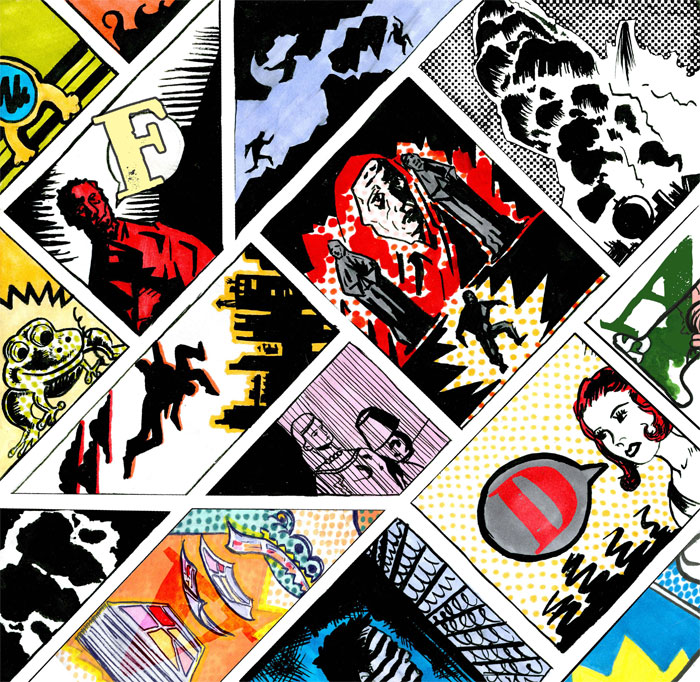
Lettering is the process used to add dialogue. Letting works alongside art to move the plot forward and allow the characters to express themselves. Letterers don’t only add in dialogue.
They also add in the titles, sound effect, captions, thought bubbles and more. Text needs to be added in so that it’s easy for a reader to follow. The chosen font should be easy to read at relatively small sizes.
There’s a lot of room for creativity in word balloons and sound effects. Many letterers add in these elements on a computer, though some add them in by hand using an Ames Guide and T-square. Text, word bubbles, and thought bubbles should always add to a story, never detract from it. They can’t block important things that are going on in the scene.
Skills that a good letterer needs:
- A love of language. A letterer needs to know how to convey meaning through text. Look through some comic book example and you’ll notice that a lot of letterers try to make the text look like a person or thing sounds. BOOM is in large capital letters, while a computer will use a digital-looking font. Whispers will be soft and the letters will have a lighter weight.
- Strong grammar skills. Letterers are often the last defense a comic book has against typos. Since lettering is often typed in by hand, with no spellcheck available in the program, a letterer needs to have a good, almost instinctive grasp of spelling, punctuation, and word use.
- Knowledge of graphic design. A letterer often has to think like a graphic designer when they design logos, titles, word balloons, and sound effects. What kind of font is most effective? What size should it be? Is this balloon the right size for the dialogue? Is this addition helpful in improving the reader’s experience and understanding? These are the sorts of questions a letterer needs to ask.
- Tech knowledge. Since most lettering is done on a computer now. Some programs that are used for lettering include Adobe Illustrator, Photoshop, and Indesign. Know how to use them. You might also want to learn how to use font making software like Fontographer, FontLab Studio, and FontForge.
- Great penmanship. If you want to do lettering by hand you’ll need to learn the oft-forgotten art of really great penmanship. It should be easy to read. If it’s very good, you can even turn it into its own font, which is a common practice.
More tips for aspiring letterers:
The industry standard for lettering is a Mac. You can use Windows, but you’ll find that you’re expected to work on Mac. Lots of RAM and fast processor speed are the important things to remember when getting a computer for lettering.
Adobe Illustrator is the industry standard. Adobe Illustrator is a vector based program that uses lines and curves based on math to create images. You can use other programs, but anyone you work with or for will expect you to use Adobe Illustrator.
No matter if you’re working on your own or with a larger company, you’ll need a way to transport files. Companies often use an FTP server to do this. If you’re on your own, you’ll need to get some kind of storage that you can take to the printer. Speak with them to see what one has worked best for them in the past.
If you plan on doing hand lettering, make sure to have pencils, erasers, an Ames guide, and a T-square on hand. These are the tools that you can use to get consistent, great looking letters. When you have the letters penciled in, then you should use a crow-quill pen and India ink to ink them in. For consistently shaped word balloons and other items, purchase some stencils in a variety of sizes.
Editors

An editor works as a manager through the whole production process. Editors ensure product quality. They identify problems and arrange for any fixes that need be made. They may even be able to do it themselves. The editor checks for errors- -text, color, or even plot issues—and makes sure the final product is polished.
Printing and Publishing
Printing is only done after everything has been signed off by the editor. Often this is done in physical print, but more and more comics are printed digitally. This process can be done very quickly.
The publisher is the one who releases the comic. The publisher can have a lot of other roles, too, including editing and marketing. They may also provide the funding for the comic. Some people choose to retail their comic online, at stores, or at conventions on their own, but you can also turn to studios like Dark Horse or Image Comics.
Skills needed for publishers:
- Business know-how. Publishing is all about business. A publisher needs to know what needs to happen and when. They need to know who can be trusted to get work done on time.
- People skills. More than anyone else on the team, a publisher needs to be good with people. Being a likable person is very helpful in this position. People will be more willing to help you out and you’ll find the team is more willing to meet your schedules or needs. You catch more flies with honey than with vinegar, after all.
- Financially smart. A publisher needs to understand how to keep the books. How much should be spent for things? Are you paying too little? Too much? Is using a more expensive option (like a glossy cover) worth the extra money or is it a pointless expense? These are the sorts of questions publishers should be asking and figuring out the answers to. This is a vitally important skill. It will make or break you as a publisher. Being able to manage money well on a project will buy you a lot of slack even as an amateur publisher
- One of the worst things a publisher can do is make promises they can’t keep. Burning one bridge with an artist can lead to a cascade of burnt bridges form their friends and networks. The comic world is quite small and people talk to each other a lot. Be honest with your schedules, contracts, pay and any other terms. This will build your reputation rather than damage it.
Some other tips for anyone looking to go into comic book publishing:
- You’re going to need money. It doesn’t matter how small your run is going to be or if you’re publishing only digital comic books, you’re going to need money. You need pay talent, print, market, and get equipment.
- Computers aren’t optional. Almost all communication you do will be on a computer or smartphone. You’ll need to check over work, which is almost all sent digitally. There is no publisher out there who does not do business without a computer.
- Figure out how you’re printing a comic if you’re creating a physical copy of it. There are a lot of option here, from established printing firms to companies on the web to Kino’s. Do your research to figure out what works best for you. There are a lot of price ranges and options out there. A lot will depend on how big a run you want to do.
- Having help is great. Having people available to help answer phones, mail packages, set up booths, and man those booths is going to remove a lot of pressure from you. See if you can get friends to help if you don’t have the money to hire anyone.
- You may want to hire a marketing firm to help you do PR so you don’t have to figure out how to do it yourself. Money is the real object here. If you’ve got money but no time, it might be time to hire someone else to do your marketing.
- If you want to distribute a comic, you’re probably going to rely on Diamond Comics. They are the distributor for comic book stores around the US. Check out their website to see how you can get them to distribute your comic book.
- Make sure you create good contracts. People will sue over a lot of things. You can vet people all you want, but it might not be enough. Create some carefully worded, honest contracts for everyone on the project. You don’t want to get caught up in a disaster if something goes wrong.
Marketing
Usually, you start getting the word out about the comic before it’s even finished. You should make press releases for websites and magazines. Advertise in those places, too. Once you have review copies ready, send them out to reviewers. Good reviews will give you a nice head start.
Tell anyone and everyone about your comic and why they should read it. Social media makes this much easier than it used to be. Crate social media pages for the comic and post regular, interesting content. You don’t want to flood people’s feed, but you do want to catch their attention.
Distribution
The most common way to get your comic out there is to distribute it through Diamond Comics. They have a tricky submission process and you will need to make sales quickly.
You can also sell at comic book conventions, which can be found in almost every major city and quite a few smaller ones. You can also sell your comic online or, if you think you’ve got a good sales pitch, ask comic book stores in person if they’ll sell it.
Start a Webcomic
There are a lot of reputable webcomic series out there, including Genius Girl and Penny Arcade. Some are like the comic strips found in newspapers, others have long-running plotlines.
This can be a better option for your comic. A lot of them are free, but they offer a number of products or even fan clubs that can help turn a profit. If you’re running into issues with traditional publishing, consider figuring out how to start a webcomic instead.
Ending thoughts on how to make a comic book
Making a comic book requires a lot of work and a lot of cooperation, but it is an incredible thing to see your writing or art come together to tell a story.
If you liked this article on how to make a comic book, you should check out these as well:
- How to draw anime: learn to do anime drawings
- Digital Painting: Concept Art, Techniques, Tips, and Tutorials
- Speed painting: How to speed paint and create beautiful artwork
- Earth Color Palettes Grounded in Nature: 40 Examples - 26 April 2024
- The EA Logo History, Colors, Font, And Meaning - 25 April 2024
- Nature Color Palettes Inspired by the Outdoors - 25 April 2024



